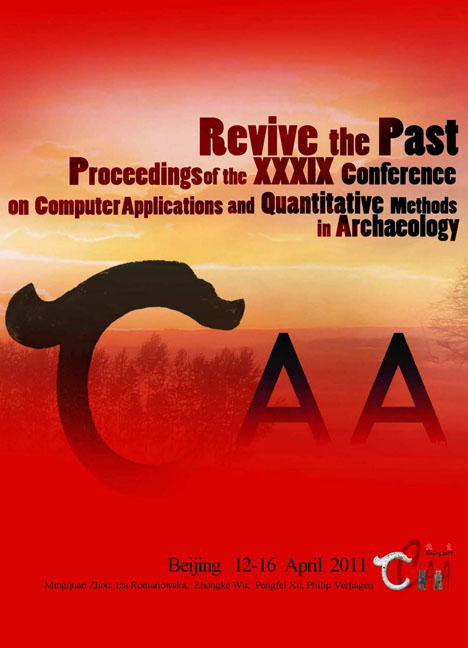 Revive the Past
Revive the Past An Ox-powered Paddlewheel Boat. Virtual Reconstruction of a 4th Century Roman Machine
Published online by Cambridge University Press: 23 June 2021
Summary
Abstract:
This paper will focus on the virtual reconstruction of a war machine, an ox-powered Roman paddle wheel boat used for its impressive speed during naval manoeuvres. The ship is described and drawn in an anonymous 4th century work but is often considered as imaginary by researchers. This is the first time, to our knowledge, that the reconstruction of this ship has been attempted and we shall show, through the experiment with a 3D model, that this warship of antiquity can work and, even more so, that it is probably the ancestor of the paddle steamer. Through this reconstruction, we would like to insist on the value of experimental history produced using scientifically justified virtual reconstructions, a medium of the future to develop innovative educational applications and write new pages in the history of science and technology.
Key Words: Virtual Reality, History of Technology, Roman Machinery
An anonymous Latin treatise of the 4th century AD, known as De Rebus Bellicis, describes, among a number of new mechanical contrivances, which in the opinion of its author ought to form part of the equipment of the Roman army, an ox-powered paddlewheel liburnian. There is no other data to accredit the use of this system, no archaeological or iconographical evidence so researchers are dubious about this text. One of the first modern editors of De Rebus Bellicis, R. Schneider (1908), wrote: “Die Liburna ist geradezu verrückt” (“The liburnian is just crazy”), and recently, in 1989 A. Giardina considered that, if the chariot à faux, described by Anonymous was at first a reality on the battlefield, and then a legend of military engineering, the paddlewheel boat is exactly the contrary: born as a fantastic machine powered by oxen, it is steam which finally provided the invention with a real application (Giardina 1989). The aim of this paper is to show that this self-propelled liburnian, described in De Rebus Bellicis, can be reconstructed with the text transmitted (and its illustrations) and with indications provided by technical knowledge in antiquity. The virtual reconstruction will show that the liburnian can work and that it could have been built and used in antiquity.
- Type
- Chapter
- Information
- Revive the PastProceedings of the 39th Conference of Computer Applications and Quantitative Methods in Archaeology, pp. 125 - 131Publisher: Amsterdam University PressPrint publication year: 2012
